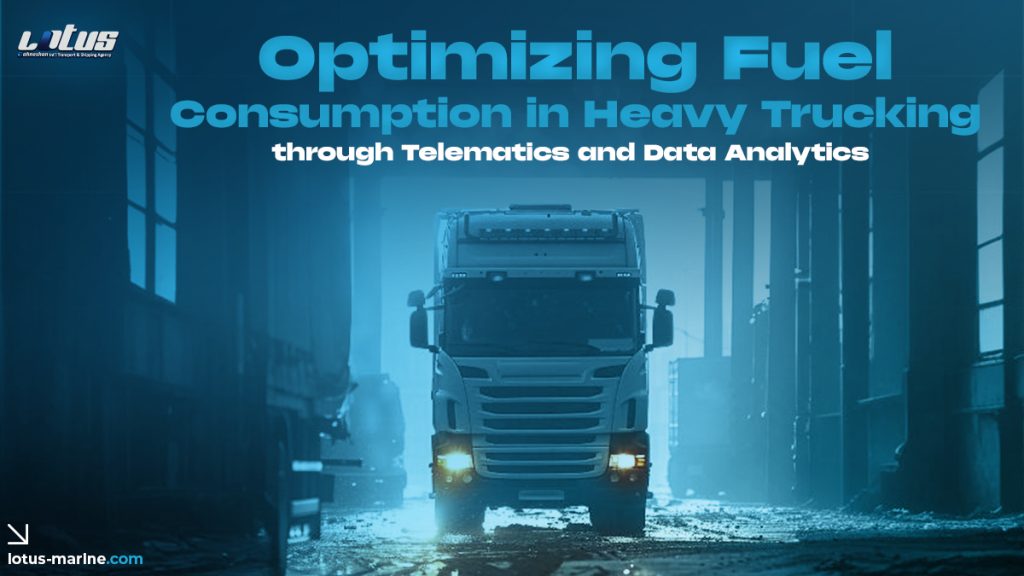Introduction
Fuel efficiency is a critical concern for the trucking industry. With fuel costs accounting for nearly 40% of operating expenses, finding ways to reduce consumption is vital. Advances in telematics and data analytics offer powerful tools to optimize fuel usage, improve operational efficiency, and minimize environmental impact.
The Current State of Fuel Efficiency in Trucking
Fuel inefficiency is a costly challenge for trucking companies. Beyond financial strain, high fuel consumption contributes to greenhouse gas emissions, making sustainability a pressing concern. The adoption of new technologies like telematics is becoming essential to address these challenges.
What is Telematics?
Telematics is a combination of telecommunications and informatics. It integrates GPS, onboard diagnostics, and sensors to monitor vehicle performance and driver behavior. In trucking, telematics systems collect data on speed, idling, fuel usage, and more, offering actionable insights.
What is Data Analytics?
Data analytics involves processing and analyzing large datasets to uncover patterns and insights. In transportation, it helps trucking companies make data-driven decisions about routes, maintenance, and fuel efficiency.
Benefits of Telematics for Fuel Optimization
Monitoring Driver Behavior
Telematics provides insights into driver habits, such as harsh braking, rapid acceleration, and excessive idling. Addressing these behaviors can significantly improve fuel efficiency.
Reducing Idling Times
Unnecessary idling wastes fuel. Telematics systems identify when a truck is idling for extended periods, prompting drivers to take corrective action.
Route Optimization
Telematics enables real-time route adjustments, helping drivers avoid traffic congestion, roadblocks, or unnecessary detours.
The Role of Driver Behavior in Fuel Consumption
Driver behavior has a direct impact on fuel use. Aggressive driving increases fuel consumption, while smoother acceleration and braking conserve energy. Driver training programs focused on eco-driving techniques can lead to measurable savings.
Real-Time Tracking and Alerts
Telematics systems provide live updates on vehicle status, alerting fleet managers to inefficiencies. Real-time alerts help reduce fuel consumption by notifying drivers of excessive speeds or other wasteful practices.
Predictive Maintenance and Fuel Savings
Preventive maintenance ensures that trucks operate at peak efficiency. Telematics systems use collected data to predict potential breakdowns, ensuring timely maintenance that avoids unnecessary fuel consumption.
Route Optimization Through Data Analytics
Shorter Routes for Reduced Fuel Use
Using analytics to map the shortest, most fuel-efficient routes minimizes travel distance and fuel consumption.
Avoiding Traffic and Terrain Challenges
Data analytics can predict traffic patterns and identify less congested routes, reducing idle time and optimizing fuel use.
Fleet-Wide Analysis for Long-Term Efficiency
Analyzing telematics data across an entire fleet helps companies identify trends, set benchmarks, and develop strategies for long-term fuel savings.
The Role of AI and Machine Learning
Advanced technologies like AI and machine learning enhance telematics by predicting fuel usage patterns and optimizing operations dynamically.
Environmental Benefits
Fuel optimization through telematics reduces emissions, helping companies meet sustainability goals and align with global environmental standards.
Challenges in Implementing Telematics and Analytics
Upfront Costs
The initial investment in telematics systems and analytics tools can be high, deterring some companies.
Resistance to Change
Traditional fleets may resist adopting new technologies, requiring extensive training and awareness campaigns.
Case Studies: Success Stories in Fuel Optimization
Fleet A: Saving Fuel with Driver Training
A trucking company reduced fuel consumption by 15% after implementing telematics and eco-driving training for its drivers.
Fleet B: Real-Time Tracking for Cost Savings
By using real-time tracking, a logistics firm saved over $100,000 annually on fuel costs across its fleet.
The Future of Fuel Optimization in Trucking
Emerging technologies like electric trucks and enhanced telematics systems will revolutionize fuel optimization. Integrating these advancements with AI will drive the industry toward greater efficiency and sustainability.
Conclusion
Optimizing fuel consumption through telematics and data analytics is no longer optional—it’s a necessity for cost efficiency and sustainability. By embracing these technologies, trucking companies can reduce expenses, enhance operations, and contribute to a greener future.
FAQs
Q1: How does telematics reduce fuel consumption?
A1: Telematics monitors driver behavior, optimizes routes, and prevents idling, reducing unnecessary fuel use.
Q2: What are the main challenges in adopting telematics?
A2: High upfront costs and resistance to change in traditional fleets are significant hurdles.
Q3: How does driver training impact fuel efficiency?
A3: Training drivers in eco-driving techniques reduces aggressive behaviors, lowering fuel consumption.
Q4: What role does AI play in fuel optimization?
A4: AI analyzes data to predict fuel usage patterns and suggest efficient operations dynamically.
Q5: Are there environmental benefits to telematics?
A5: Yes, reducing fuel consumption decreases emissions, contributing to sustainability goals.







